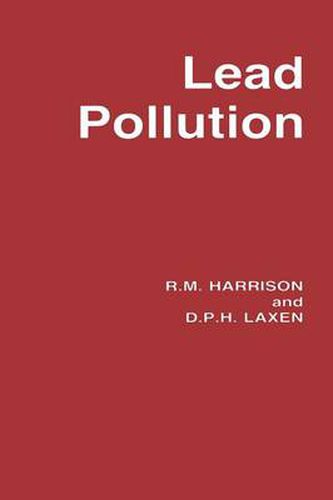Readings Newsletter
Become a Readings Member to make your shopping experience even easier.
Sign in or sign up for free!
You’re not far away from qualifying for FREE standard shipping within Australia
You’ve qualified for FREE standard shipping within Australia
The cart is loading…






This title is printed to order. This book may have been self-published. If so, we cannot guarantee the quality of the content. In the main most books will have gone through the editing process however some may not. We therefore suggest that you be aware of this before ordering this book. If in doubt check either the author or publisher’s details as we are unable to accept any returns unless they are faulty. Please contact us if you have any questions.
At the time of writing, the topic of lead pollution is the subject of an intense and sometimes heated debate. The argument centres upon possible adverse health effects arising from exposure of children to current environmental levels of lead. Such arguments now appear little closer to resolution than they did five years ago, although the development of ever more sophisticated biochemical and epidemiological techniques may eventually provide an answer. Over the past five to ten years, as the general public has become aware of the lead issue, pressure has been put upon governments to limit emissions of lead, and hence limit or reduce the exposure of the population to the metal. Govern ments and governmental agencies have responded in several ways, varying between those who prefer to take little or no action on the basis that they see no cause for concern, and those who have taken firm action after concluding that the scientific and medical evidence warrants this approach. Any effective control strategy for lead requires knowledge of the sources of environmental exposure and an understanding of the pathways of this metal in the environment. This book aims to provide such information and to explain the methods available for limiting emissions of lead from the most important sources. To put this information in context a chapter on the routes of human exposure to lead and the health effects is included.
$9.00 standard shipping within Australia
FREE standard shipping within Australia for orders over $100.00
Express & International shipping calculated at checkout
This title is printed to order. This book may have been self-published. If so, we cannot guarantee the quality of the content. In the main most books will have gone through the editing process however some may not. We therefore suggest that you be aware of this before ordering this book. If in doubt check either the author or publisher’s details as we are unable to accept any returns unless they are faulty. Please contact us if you have any questions.
At the time of writing, the topic of lead pollution is the subject of an intense and sometimes heated debate. The argument centres upon possible adverse health effects arising from exposure of children to current environmental levels of lead. Such arguments now appear little closer to resolution than they did five years ago, although the development of ever more sophisticated biochemical and epidemiological techniques may eventually provide an answer. Over the past five to ten years, as the general public has become aware of the lead issue, pressure has been put upon governments to limit emissions of lead, and hence limit or reduce the exposure of the population to the metal. Govern ments and governmental agencies have responded in several ways, varying between those who prefer to take little or no action on the basis that they see no cause for concern, and those who have taken firm action after concluding that the scientific and medical evidence warrants this approach. Any effective control strategy for lead requires knowledge of the sources of environmental exposure and an understanding of the pathways of this metal in the environment. This book aims to provide such information and to explain the methods available for limiting emissions of lead from the most important sources. To put this information in context a chapter on the routes of human exposure to lead and the health effects is included.